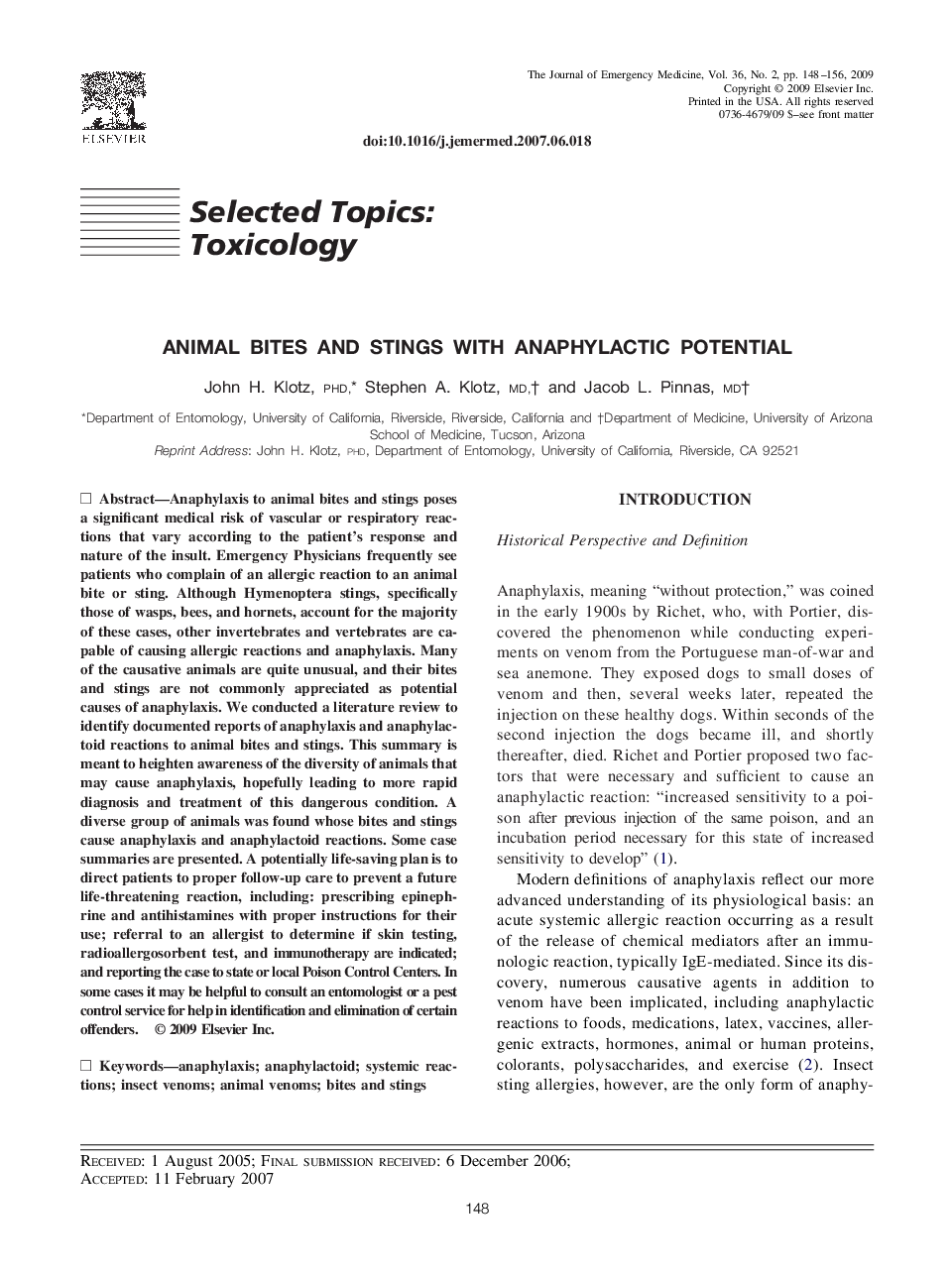| کد مقاله | کد نشریه | سال انتشار | مقاله انگلیسی | نسخه تمام متن |
|---|---|---|---|---|
| 3250730 | 1589195 | 2009 | 9 صفحه PDF | دانلود رایگان |

Anaphylaxis to animal bites and stings poses a significant medical risk of vascular or respiratory reactions that vary according to the patient's response and nature of the insult. Emergency Physicians frequently see patients who complain of an allergic reaction to an animal bite or sting. Although Hymenoptera stings, specifically those of wasps, bees, and hornets, account for the majority of these cases, other invertebrates and vertebrates are capable of causing allergic reactions and anaphylaxis. Many of the causative animals are quite unusual, and their bites and stings are not commonly appreciated as potential causes of anaphylaxis. We conducted a literature review to identify documented reports of anaphylaxis and anaphylactoid reactions to animal bites and stings. This summary is meant to heighten awareness of the diversity of animals that may cause anaphylaxis, hopefully leading to more rapid diagnosis and treatment of this dangerous condition. A diverse group of animals was found whose bites and stings cause anaphylaxis and anaphylactoid reactions. Some case summaries are presented. A potentially life-saving plan is to direct patients to proper follow-up care to prevent a future life-threatening reaction, including: prescribing epinephrine and antihistamines with proper instructions for their use; referral to an allergist to determine if skin testing, radioallergosorbent test, and immunotherapy are indicated; and reporting the case to state or local Poison Control Centers. In some cases it may be helpful to consult an entomologist or a pest control service for help in identification and elimination of certain offenders.
Journal: The Journal of Emergency Medicine - Volume 36, Issue 2, February 2009, Pages 148–156